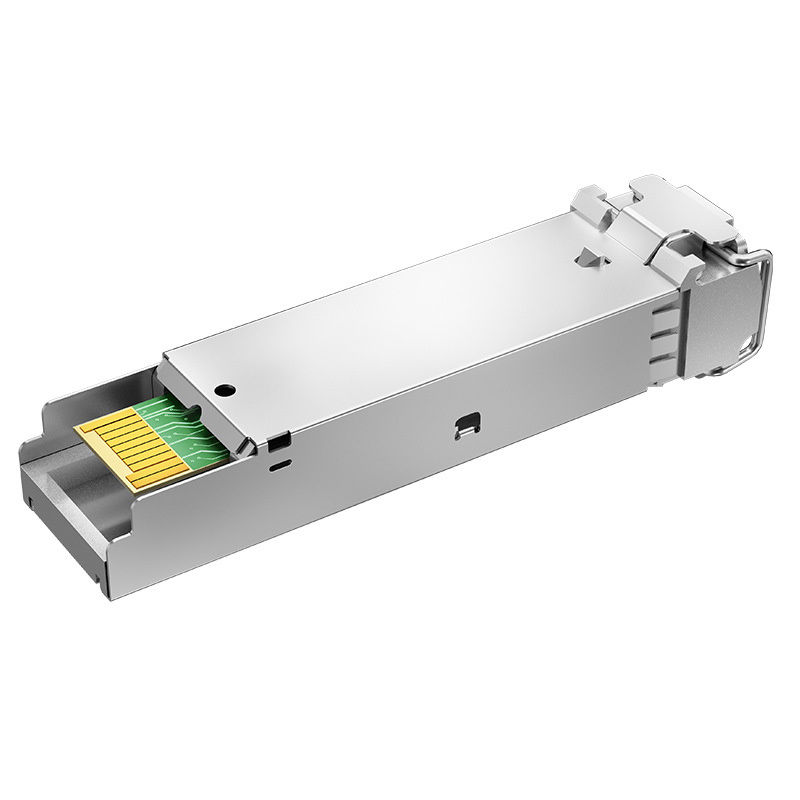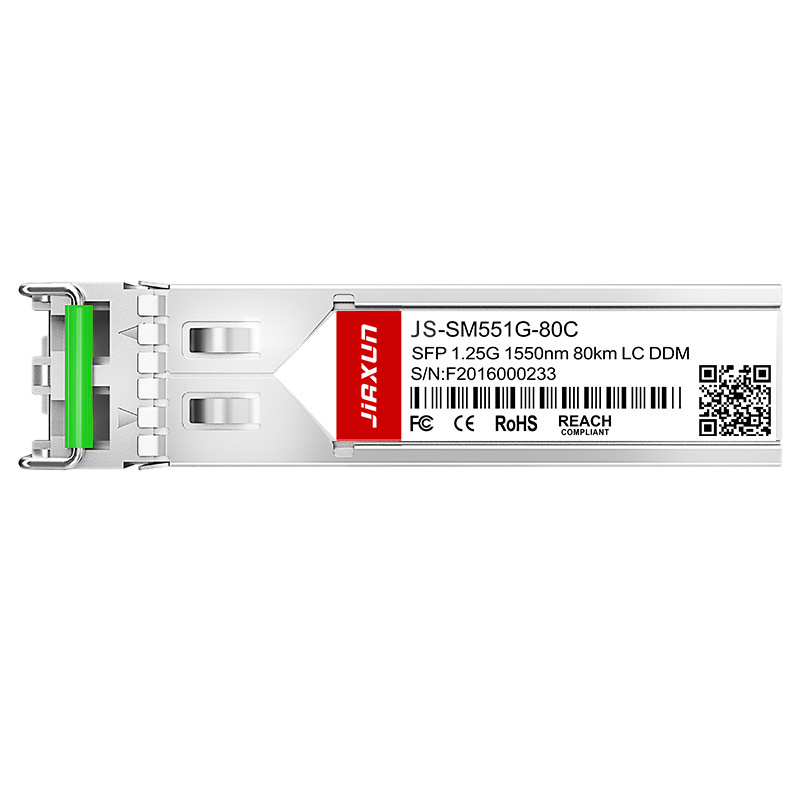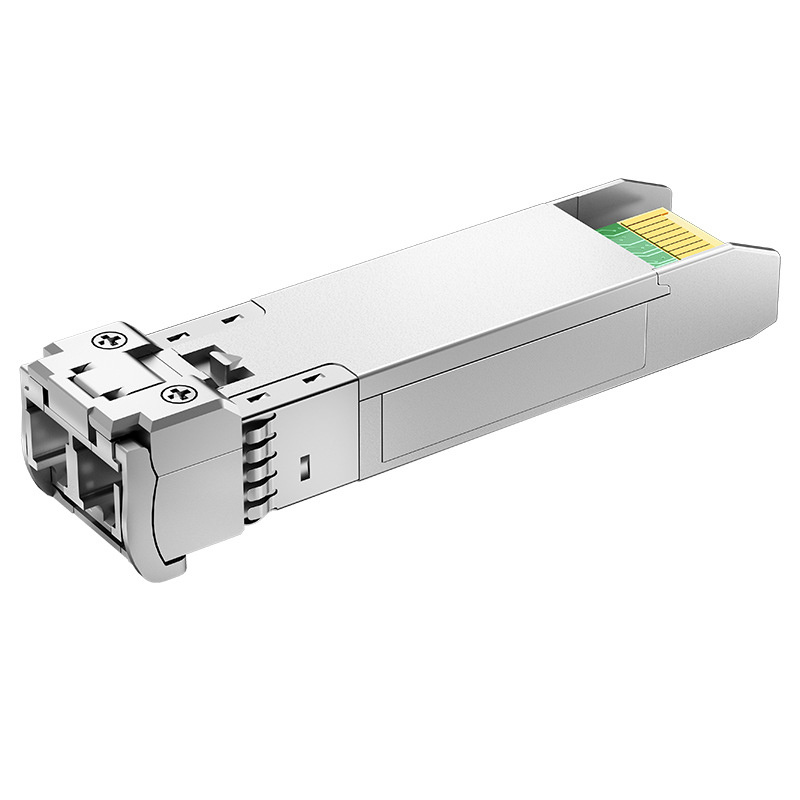07
2025
-
07
10 Gigabit single-mode optical module
Author:
10 Gigabit single-mode optical modules are optoelectronic conversion devices that support high-speed data transmission of 10Gbps. They use single-mode fiber for long-distance communication and are widely used in data centers, metropolitan area networks, and 5G networks. Below are their core technical characteristics and application guide:

I. Core Technical Characteristics
Packaging and Interface
The mainstream uses SFP+ packaging (small form-factor pluggable), supporting LC duplex interfaces. Some models support single-fiber BIDI (bi-directional single fiber) technology, enabling bidirectional transmission over a single pair of fibers. For example, TP-LINK's TL-SM512LS-10KM uses a dual-fiber LC interface, while the TL-SM511LSB-2KM is a single-fiber LC design.
Wavelength and Transmission Distance
- 1310nm Suitable for 10-40km transmission, relatively low cost, using DFB lasers. Typical models include Ruijie XG-LR-SM1310 (10km) and Easy Tian Guang Communication ES31X-40D (40km).
- 1550nm Supports long-distance transmission of 40-100km and requires an EML laser, such as ES55X-3LCD100 (100km).
Wavelength selection should consider fiber attenuation (approximately 0.35dB/km for 1310nm, approximately 0.19dB/km for 1550nm) and dispersion characteristics (1550nm has higher dispersion, and transmission distance limitations should be noted).
Rate and Protocol
Supports 10.3125Gbps rate, conforms to the IEEE 802.3ae (10GBASE-LR/ER/ZR) standard, is compatible with the SFP+ MSA protocol, and can be adapted to mainstream switches (such as Huawei, Cisco, Ruijie).
Power Consumption and Temperature
Typical power consumption <1.5W (e.g., ES31X-40D is 1.5W), operating temperature 0℃~70℃ (commercial grade), and some models support -5℃~70℃ (industrial grade).

II. Application Scenarios
Data Center Interconnection
Used for high-speed connection between racks and backbone links in campus networks. For example, ES31X-3LCD40 (40km) can be used for cross-data center communication.
Telecom Operator Networks
Supports 5G base station fronthaul/backhaul. For example, 1550nm modules (such as ES55X-3LCD80) can cover 80km transmission requirements.
Financial and Medical Fields
Meets low bit error rate (<10⁻¹²) and high reliability requirements. For example, 1310nm modules are used for cross-regional data synchronization in banks.
Metropolitan Area Networks and Wide Area Networks
Long-distance 1550nm modules (such as SFP-10G-ZR) can be used to connect inter-city backbone networks, with transmission distances up to 80km.

III. Selection and Procurement Suggestions
Key Parameter Matching
- Distance and Wavelength For distances within 10km, 1310nm can be selected (such as JIAXUN -10KM). For distances over 40km, 1550nm is preferred (such as ES55X-3LCD40). JS-SM5510-A2C Fiber Type
- Requires OS2 single-mode fiber (9/125μm). Avoid using multi-mode fiber, which can lead to transmission failure. Compatibility
- Choose modules that support DDM (digital diagnostic) functionality for easy monitoring of optical power, temperature, and other parameters. Brand and Cost-Effectiveness
High-End Brands
- Huawei and Cisco offer stable performance but are more expensive (e.g., Huawei XFP modules cost approximately 86-3258 yuan). Cost-Effective Options
- Brands such as FT Guangbida and Xiliweishi offer prices as low as 15-33 yuan, suitable for budget-constrained scenarios. Enterprise-Grade Solutions
- Ruijie SFP+SM1310 (1000 yuan) provides high reliability and is suitable for core networks. Installation and Maintenance
Anti-Static Precautions
- Wear an anti-static wrist strap during operation to avoid direct contact with the gold fingers. Cleaning Optical Ports
- Regularly clean the end faces with anhydrous alcohol and a dust-free cotton swab to prevent contamination from causing optical attenuation. Troubleshooting
- Read the optical power using DDM. If the received optical power is below -14.4dBm (such as TP-LINK modules), check the fiber link or replace the module. IV. Comparison with Other Modules
Type
| Transmission Distance | Cost | Typical Applications | 10 Gigabit Single-Mode |
|---|---|---|---|
| High | 10-100km | Long-distance backbone networks, metropolitan area networks | 10 Gigabit Multi-Mode |
| Low | 300-550m | Short-distance interconnection in data centers | 40G/100G Single-Mode |
| Very High | 10-100km | Ultra-high-speed data centers, 5G core networks | Single-mode modules have a significant advantage in long-distance transmission, while multi-mode is suitable for short-distance scenarios. If upgrading to higher speeds is needed, consider QSFP+ packaged 40G modules (such as 40GBASE-LR4), but note equipment compatibility. |
V. Market Trends and Technological Development
五、市场趋势与技术发展
Long Reach and Low Power Consumption
The 1550nm module, through optimized TEC cooling technology, reduces power consumption from 1.5W to below 1.2W, while supporting longer transmission distances (e.g., ES55X-3LCD100 reaches 100km)614.
Integration and Intelligence
Some modules integrate DSP (Digital Signal Processing) chips to enhance anti-interference capabilities; DDM functionality has been expanded from basic monitoring to predictive maintenance620.
Green Energy Saving
Manufacturers have launched "fanless" design modules (such as TP-LINK TL-SM512LS-10KM), reducing power consumption and noise through optimized heat dissipation structures112.
VI. Typical Model Recommendations
- 10km Scenario :JIAXUN JS-BL332710-10C -10KM (1310nm, dual fiber, 10km)1.
- 40km Scenario :JIAXUN JS-BL273310-40C (1310nm, dual fiber, 40km)13.
- 80km Scenario :JS-BL55491G-80C (1550nm, dual fiber, 80km)6.
- Single Fiber Solution :JS-BL49311G-40C -2KM (1270/1330nm, single fiber, 2km)5.
VII. Summary
10 Gigabit single-mode optical modules are core components for long-distance, high-speed communication. Selection should consider transmission distance, fiber type, equipment compatibility, and budget. It is recommended to prioritize products that support DDM functionality, have passed industry certifications (such as RoHS), and follow installation standards to ensure stability. With technological advancements, future modules will focus more on low power consumption, intelligence, and collaborative deployment with 400G/800G networks.
10 Gigabit single-mode optical module
Previous Page
Previous Page
07
2025-07
Is a 1.25g optical module a Gigabit module?
03
2025-07
Differences in RJ45 connector models
03
2025-07
RJ45 connector manufacturers lead the way in network connection technology
25
2025-06
What are the functions of the 8 pins of an RJ45 connector?
25
2025-06
What does RJ45 connector mean?
19
2025-06
Contact Us
Factory add: NO.54. Jinhu South Road, Chenjiang Town, Zhongkai Hi-tech Zone, Huicheng District, Huizhou city, China
Telephone:0752-2099791
Office add: B901-1, Silver Star Hi-Tech Building, No. 1301 Guanguang Road, Longhua District, Shenzhen, China
Website:www.jiaxunzg.cn
Telephone:0755-81752121
Fax: 0755-81752963
Mailbox:sales1@jiaxunzg.cn
Mailbox:sales2@jiaxunzg.cn
Mailbox:sales3@jiaxunzg.cn
Copyright © 2024 Jiaxun (Huizhou) Intelligent Technology Co., Ltd. Privacy Policy






